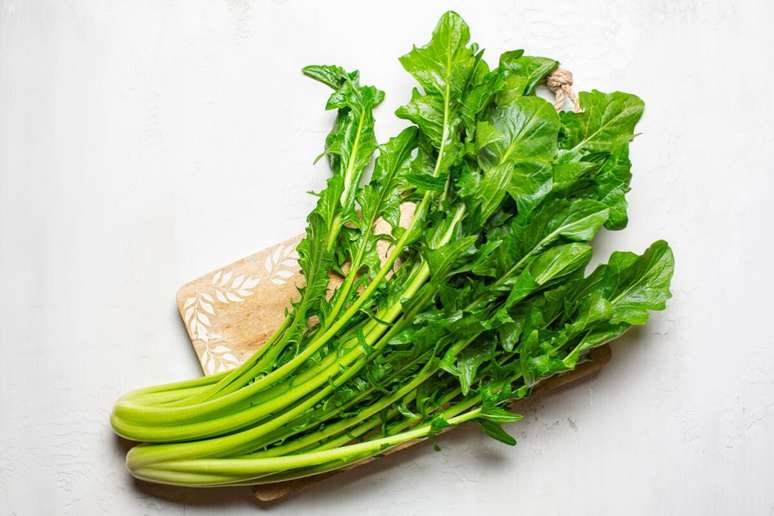Cafira Foz, Mariana Sciotti and Telma Shiraishi demonstrate that responsible women contribute to a more diverse and welcoming environment
As we know, there is still a long way to go for the world to achieve equality between men and women. International Women’s Day was yesterday (08), but remembering the fight for more equity, respect and women’s rights across all sectors must live with us every day.
Kitchens are no different. But, although the role of cooks has always been with women in the domestic environment, when it comes to professionalisation in restaurants, they often remain invisible.
According to a study carried out by the international magazine ‘Chef’s Pencil’, in 2022 only 6% of the restaurants considered the best in the world will be run by women. The analysis looked at 2,286 Michelin-starred restaurants in 16 countries, as well as the world’s 100 best establishments ranked by “The World’s 50 Best” group last year.
Fortunately, as in the world, the scenario of women in gastronomy is also changing in Brazil, albeit slowly. In this week in which Women’s Day was celebrated, the Michelin Guide, in its awards, recognized the space that women are conquering and that this must be celebrated. Topping the list, women are still rare except when mentioned alongside their husbands. This year, however, Benin-born Georgiana Viou received her first solo star with the Rouge restaurant in Nîmes.
Command
Going a bit in the opposite direction, Cafira Foz, 38, chef and owner of Fitó, has decided to work only with women since the opening of her restaurant. It was on a trip to France with her ex-boyfriend and partner that she discovered she wanted to run a kitchen. “I was very excited by the gastronomic experiences. When we returned I started studying, learning the techniques, cooking a lot and, four years later, we opened”, she says.
“Perhaps because I had this experience and learned by myself, here in this kitchen, which was the first one I entered, it took me a while to recognize myself as a chef”, he says. “There was also a well-known professional who, when we opened Fitó, said that ‘the food was good, but it was food made ‘for a husband’. I thought it must be very difficult for a privileged man to see a woman from the Northeast open a restaurant and become successful. It was in the pandemic that this key was turned. “In this place of urgency and deprivation, I’ve managed to get back on top, keep my restaurant and my staff. Sure, technique is important, but I think we’re still stuck with some validation from a school, mostly foreign, and from the class, to exist as professionals.”
From the beginning, it always made more sense for Cafira to be involved in important matters. “Walking into my restaurant and seeing men, women, seniors, LGBTQ, Black and diverse as customers has always been key. While I wanted to have this validation as a chef, I felt that that was my path,” she says.
Cafira says she was raised by her grandmother, in a very feminine environment, with very strong women. “I always had the perspective that life was more difficult for us. When I left home, I felt this difficulty, but I thought it was just my problem,” she recalls. «When I opened the restaurant, I wanted to get out of that place of submission, of always having to answer to men. But where were the women at the stove? they are responsible for managing homes, but when it becomes a profession, very few are in charge. And the teams have little gender parity, ”she analyzes.
Today, six years later, she is proud of the business model she runs. In the bar, lounge and kitchen, you have a team of 35 employees. As the general Brazilian market does not cater for female needs, female chefs create their own management models. Just like Mari Sciotti, Cafira also brings a more human side to everyday life. “Women, myself included, need a healthy environment in which to work. People assign the position of leader to someone who doesn’t feel pain, who doesn’t cry. Women are always asked about their attitudes, even outside of professional life.”, she says. “In the process, we have built a corporate culture that offers employees access to therapy and exercise, we hold monthly talk circles with a certain theme, we conduct climate research, courses, and we are starting to have a career plan. it’s still the perfect world, but I’ve tried to take care of the well-being of people who, like me, have their own lives and personal pains and who need to be complete even as professionals,” she says.
When asked if there are advantages or disadvantages to working with women, Cafira is adamant. “I only see beautiful things. I’ve never worked with men and I don’t feel like it. Not that I hate them. Sure, in life I relate, I make partnerships, etc. But in the Fitó project, I only work with women, from the agency marketing to agriculture providing input for the restaurant. And I also see a beautiful movement of female chefs working together. It’s really amazing.”
Breaking the barrier
In Japanese culture, those who usually occupy prominent positions are men. Even in gastronomy, where the most refined and traditional restaurants are in charge. Chef Telma Shiraishi, from Aizomê, 53, says that, in Japan, very few women are able to practice the profession as we know it. They own restaurants, but they are small businesses that serve more home cooking.
Thus, Telma stands out both for being a female cook and for being the owner of her own house, who has been practicing traditional Japanese cuisine for 16 years. Aizomê was born as a small restaurant, almost like an Izakaya, Japanese bars, frequented by executives. After five years Telma found herself alone, the other two partners left the partnership. “Imagine a Brazilian, granddaughter of immigrants, alone, who runs a Japanese restaurant, with all the responsibility of serving a very demanding clientele,” she recalls.
Telma says the derogatory comments came early and running a kitchen hasn’t been easy. “It was very demanding from the clients and the team, which I had to change several times. Some did not accept being led by a woman, others thought that I would not be able to handle it and should remain in the administration part. I have heard a lot that Aizomê would no longer work properly, since it was commanded by a woman, it already was,” he says. “For about two years I had to prove myself, proving that I have seriousness, quality and flavors from Japan, which was what I thought from the beginning. Over time I managed to change the culture. Today the leadership positions in my kitchen are of women. This was a great achievement,” she reveals.
For Telma, the space of women in the professional field in Japan followed the evolution in the rest of the world, little by little they were freeing themselves from the roles of an ancient culture where everything is very defined. She herself is proof of this. Her first recognition came in 2018, with an honorary diploma from the Japanese government. Since then she has been in charge of the kitchen of the Consulate of Japan, where she takes care of receptions and banquets. And since 2019 she has been the Ambassador for the diffusion of Japanese cuisine.
“I am the first woman to take on the position of chef at the official residence of the consulate in São Paulo. It is a position of immense responsibility, but it gives me pleasure because I can play with the possibilities that I am sometimes unable to offer. Apply at the restaurant. I am happy to see how quickly the Japanese have responded to these developments. On the other hand, I am happy to be recognized for doing the right thing. In the beginning, I had to offer much more than my colleagues males in the profession. I am grateful, because because of Also, I had to study more, which allowed me to grow and do what I do today.”
Source: Terra
Ben Stock is a lifestyle journalist and author at Gossipify. He writes about topics such as health, wellness, travel, food and home decor. He provides practical advice and inspiration to improve well-being, keeps readers up to date with latest lifestyle news and trends, known for his engaging writing style, in-depth analysis and unique perspectives.









